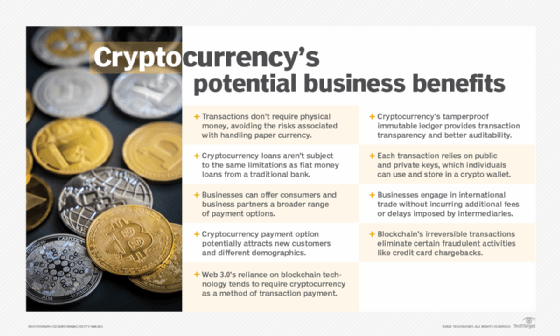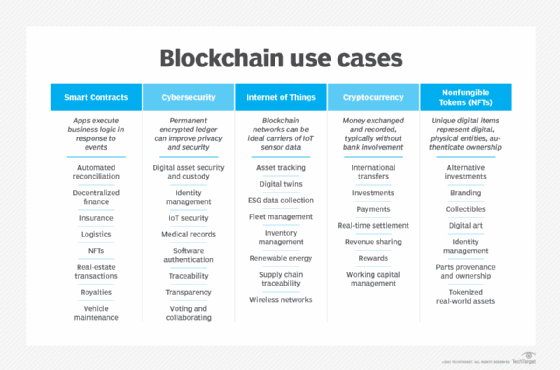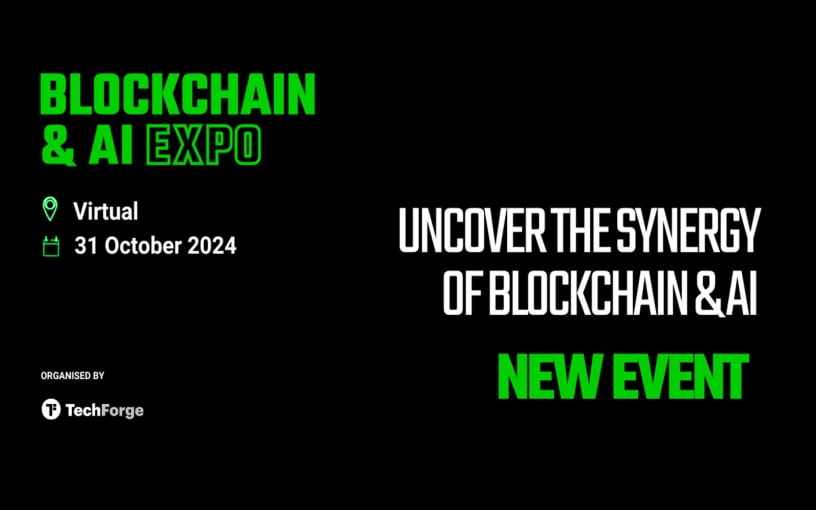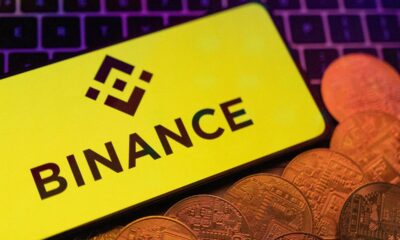News
A Timeline and History of Blockchain Technology

Blockchain was officially introduced in 2009 with the release of its first application — the Bitcoin cryptocurrency — but its roots reach back several decades. Many of the technologies that form the basis for blockchain today were in the works long before the emergence of Bitcoin.
Still, blockchain most identifies with Bitcoin — for better or worse. In the wild and raucous years that followed Bitcoin’s debut, blockchain earned a reputation akin to the Wild West. Its decentralized, peer-to-peer (P2P) architecture allowed just about anyone to participate in the process, making it seem too risky for business use. That started to change in 2016 when a burgeoning open source community began developing complete enterprise platforms.
Since then, the technology has taken on a life of its own, with interest coming from many quarters, despite the sometimes scary cryptocurrency headlines of late. Governments, businesses and other organizations are researching and deploying blockchain technology to meet needs that have nothing to do with digital currency. In the face of proliferating cyberthreats and government data privacy regulations, blockchain offers security, immutability, traceability and transparency across a distributed network, making it well suited for use cases that have become difficult to support and protect with traditional infrastructures.
What is blockchain?
Blockchain is a type of database that’s a public ledger for recording transactions without the need for a third party to validate each activity. It’s distributed across a P2P network and consists of data blocks linked together to form a continuous chain of immutable records. Each computer in the network maintains a copy of the ledger to avoid a single point of failure. Blocks are added in sequential order, and they’re permanent and tamperproof.
A blockchain starts with an initial block — often referred to as the Genesis block — that records the first transactions. The block is also assigned an alphanumeric string called a hash, which is based on the block’s timestamp. Blocks are added to the chain sequentially. Each block uses the hash from the previous block to create its own hash, thus linking the blocks together.
Blockchain also uses a computational process called consensus to validate a block’s authenticity before it can be added to the chain. As part of this process, most of the nodes on the blockchain network must agree that the new block’s hash has been calculated correctly. Consensus ensures that all copies of the distributed ledger are in the same state.
Initially, blockchain provided a distributed public ledger to support Bitcoin, so transactions could be recorded without the need for a central authority to establish trust in a trustless environment. Not only were transactions more efficient, but the costs typically associated with third-party verification were eliminated. Blockchain also provided greater transparency, traceability and security than conventional approaches to handling distributed transactions.
Blockchain’s historical building blocks
Although blockchain as an entity has a relatively short history, its influence today is widespread and its applications wide-ranging and growing. Through the decades, blockchain’s development and evolution include some of the following notable developments:
- Pioneers like Merkle and his tree, Chaum and digital cash, Haber and timestamping, Dwork and proof of work (PoW), Black and hashcash, Finney and reusable PoW dotted the early years of the pre-blockchain landscape.
- The presumed pseudonym Satoshi Nakamoto was created to introduce the concept of cryptocurrency and blockchain. Shortly thereafter, cryptocurrency was launched and Nakamoto conducted the first bitcoin transaction, a bitcoin exchange was established and a programmer paid 10,000 bitcoin for two pizzas.
- Bitcoin’s price soared from pennies to tens of thousands of dollars, all the while draped in controversies, shutdowns, crackdowns, bankruptcies, scams, scandals and arrests.
- Blockchain started to somewhat divorce itself from Bitcoin when the decentralized blockchain platform Ethereum eventually became one of the biggest applications of blockchain technology and opened the door to numerous business applications beyond cryptocurrencies.
- And buoyed by AI, IoT, non-fungible tokens (NFTs), decentralized finance (DeFi) and smart contracts, as well as initiatives by the likes of Walmart and Amazon, blockchain has gained legitimacy as a safe, viable alternative to traditional methods of conducting business and individual transactions.
Block-by-block description of blockchain’s inner workings.
1979
One of the early pre-blockchain technologies is the Merkle tree, named after computer scientist and mathematician Ralph Merkle. He described an approach to public key distribution and digital signatures called tree authentication in his Ph.D. thesis for Stanford University. Merkle eventually patented this idea as a method for providing digital signatures. The Merkle tree provides a data structure for verifying individual records.
1982
In his Ph.D. dissertation for the University of California, Berkeley, David Chaum described a vault system for establishing, maintaining and trusting computer systems among mutually suspicious groups. The system embodied many of the elements that comprise a blockchain. Chaum is also credited with inventing digital cash, and in 1989, he founded the company DigiCash.
1991
Stuart Haber and W. Scott Stornetta published an article describing how to timestamp digital documents to prevent users from backdating or forward-dating electronic documents. The goal was to maintain the document’s complete privacy without requiring record-keeping by a timestamping service. Haber and Stornetta updated the design to incorporate Merkle trees, which enabled multiple document certificates to live on a single block.
1993
The beginnings of the PoW concept were published in a paper by Cynthia Dwork and Moni Naor to provide “a computational technique for combatting junk mail, in particular, and controlling access to a shared resource, in general.”
1997
Adam Black introduced hashcash, a PoW algorithm that provided denial-of-service countermeasures.
1999
Markus Jakobsson and Ari Juels published the term proof of work. Also, the P2P network was popularized by the now defunct peer-to-peer file sharing application Napster. Some argued that Napster was not a true P2P network because it used a centralized server. But the service still helped breathe life into the P2P network, making it possible to build a distributed system that could benefit from the compute power and storage capacity of thousands of computers.
2000
Stefan Konst introduced the concept of cryptographically secured chains in his paper “Secure Log Files Based on Cryptographically Concatenated Entries.” His model, which showed that entries in the chain can be traced back from the Genesis block to prove authenticity, was the basis for today’s blockchain models.
2004
Hal Finney introduced reusable PoW, a mechanism for receiving a non-exchangeable — or non-fungible — hashcash token in return for an RSA-signed token. The PoW approach today plays a vital role in Bitcoin mining. Cryptocurrencies like Bitcoin and Litecoin use PoW, and Ethereum shifted to the proof-of-stake protocol to secure a network using a fraction of the energy that PoW uses.
2008
Satoshi Nakamoto, thought to be a pseudonym used by an individual — or group of individuals — published a white paper introducing the concept of cryptocurrency and blockchain and helped develop the first Bitcoin software. Blockchain infrastructure, according to the white paper, would support secure, P2P transactions without the need for trusted third parties such as banks or governments. Nakamoto’s real identity remains a mystery, but there has been no shortage of theories.
The Bitcoin/blockchain architecture was introduced and built on technologies and concepts from the previous three decades. Nakamoto’s design also presented the concept of a “chain of blocks,” making it possible to add blocks without requiring them to be signed by a trusted third party. Nakamoto defined an electronic coin as a “chain of digital signatures,” in which each owner transfers the coin to the next owner by “digitally signing a hash of the previous transaction and the public key of the next owner and adding these to the end of the coin.”
2009
Cryptocurrency was launched during the Great Recession, when the government pumped large amounts of money into the economy. Bitcoin was worth less than a penny then. Nakamoto mined the first Bitcoin block, validating the blockchain concept. The block contained 50 bitcoin and was known as the Genesis block — aka block 0. Nakamoto released Bitcoin v0.1 to the web service SourceForge as open source software. Bitcoin is now on GitHub.
The first Bitcoin transaction took place when Nakamoto sent Hal Finney 10 bitcoin in block 170. The Bitcoin-dev channel was created on the text-based instant messaging system Internet Relay Chat for Bitcoin developers. The first Bitcoin exchange — Bitcoin Market — was established, enabling people to exchange paper money for bitcoin. Nakamoto launched the Bitcoin Talk forum to share Bitcoin-related news and information.
In the spirit of cryptocurrency as money with fixed supply, Nakamoto set up a system to ensure the number of bitcoin mined won’t ever exceed 21 million.

Blockchain’s evolution through the years has been intimately tied to cryptocurrencies, namely Bitcoin.
2010
On May 22, Bitcoin made history when a programmer Laszlo Hanyecz paid 10,000 bitcoin for two delivered Papa John’s pizzas. The two pizzas back then were valued at about $40, a transaction that would balloon to a value of more than $260 million at today’s bitcoin price level.
A short time later that year, programmer Jed McCaleb launched Mt. Gox, a Tokyo-based Bitcoin exchange. Mt. Gox was short for Magic: The Gathering Online eXchange — a carryover from a fantasy card game. At its peak, Mt. Gox handled more than 70% of all Bitcoin transactions. But in August, a hacker exploited a bug in the blockchain code and created more than 184 billion bitcoin in block 74,638, tarnishing Bitcoin’s reputation. Nakamoto published a new version of the Bitcoin software, but by the end of the year, he disappeared from the Bitcoin scene completely.
2011
One-fourth of the 21 million bitcoin had been mined. By early February, the value of a bitcoin was equal to the U.S. dollar. Shortly thereafter, McCaleb sold Mt. Gox to Mark Karpelès. And soon after that, the bitcoin reached parity with the euro and British pound sterling. WikiLeaks started accepting bitcoin donations. However, Mt. Gox was hacked and bitcoin were stolen, causing an artificial drop in value and resulting in suspension of trading. Litecoin was released in October, representing one of the earlier Bitcoin spinoffs and considered the first alternative cryptocurrency.
2012
The interest in cryptocurrencies solidified. Bitcoin’s price hovered around $5 for most of the year with several fluctuations. Early that year, Mihai Alisie and Ethereum creator Vitalik Buterin launched Bitcoin Magazine and published their first issue in May. A few months later, the Bitcoin Foundation was established to promote Bitcoin and restore public perceptions of cryptocurrency after several scandals. McCaleb and Chris Larsen founded OpenCoin, which led to the development of the Ripple transaction protocol for currency transactions and real-time payments. Coinbase raised more than $600,000 in its crowd-funded seed round on its way to becoming one of the top Bitcoin exchanges.
2013
Bitcoin’s upward trajectory continued. In February, Coinbase reported selling $1 million worth of bitcoin in a single month at more than $22 each. By the end of March, with 11 million bitcoin in circulation, the currency’s total value exceeded $1 billion. And in October, the first reported bitcoin ATM launched in a Vancouver, B.C., coffee shop.
But it wasn’t all good news for digital currency. Both Thailand and China banned cryptocurrencies. The U.S. Federal Court seized Mt. Gox’s funds in the U.S. for transmitting money without a license. And the FBI shut down the dark web marketplace Silk Road, confiscating about 144,000 bitcoin worth more than $1 billion and resulting in a life prison sentence for owner Ross Ulbricht for a litany of crimes, including drug trafficking, computer hacking and money laundering.
2014
Despite setbacks, one of the more important milestones in blockchain’s history occurred when Bitcoin Magazine co-founder Buterin published a white paper proposing a decentralized application platform, leading to the creation of Ethereum and the Ethereum Foundation. Ethereum paved the way for blockchain technology to be used for applications other than cryptocurrency. It introduced smart contracts and provided developers with a platform for building decentralized applications.
Financial institutions and other industries began to recognize and explore blockchain’s potential, shifting their focus from digital currency to the development of blockchain technologies. But Bitcoin stayed in the spotlight — for better and worse. The Mt. Gox Bitcoin exchange filed for bankruptcy. The Bitcoin Foundation vice chairperson was arrested for money laundering. And the U.K. tax authority classified bitcoin as private money. Yet several companies accepted bitcoin by year’s end, including the Chicago Sun-Times, Overstock.com, Microsoft, PayPal and Expedia. Bitcoin’s acceptance only added fuel to blockchain’s fire.
2015
The Ethereum Frontier network launched, enabling developers to write smart contracts and decentralized apps that could be deployed to a live network. Ethereum was on its way to becoming one of the biggest applications of blockchain technology. It drew in an active developer community that continues to this day. In addition, Nasdaq initiated a blockchain trial. The Linux Foundation launched the Hyperledger project. And nine major investment banks joined forces to form the R3 consortium, exploring how blockchain could benefit their operations. Within six months, the consortium grew to more than 40 financial institutions.
2016
The term blockchain gained acceptance as a single word, rather than being treated as two concepts, as they were in Nakamoto’s original paper. The Chamber of Digital Commerce and the Hyperledger project announced a partnership to strengthen industry advocacy and education. A bug in the Ethereum decentralized autonomous organization code was exploited, resulting in a “hard fork” in the Ethereum network. The Bitfinex cryptocurrency exchange was hacked and nearly 120,000 bitcoin were stolen — a bounty worth about $66 million.
2017
Bitcoin hit a record high of nearly $20,000. Japan recognized bitcoin as legal currency. Seven European banks formed the Digital Trade Chain Consortium to develop a trade finance platform based on blockchain. The Block.one software company introduced the EOS blockchain operating system, based on the EOS cryptocurrency and designed to support commercial decentralized applications. About 15% of global banks used blockchain technology in some capacity.
2018
Entering its 10th year, bitcoin’s value continued to drop, ending the year at about $3,800. The online payment firm Stripe stopped accepting bitcoin payments. Google, Twitter and Facebook banned cryptocurrency advertising. South Korea banned anonymous cryptocurrency trading but announced it would invest millions in blockchain initiatives. The European Commission launched the Blockchain Observatory and Forum to accelerate the development of blockchain. Baidu introduced its blockchain-as-a-service platform.
2019
Walmart launched a supply chain system based on the Hyperledger platform. Amazon announced the general availability of its Amazon Managed Blockchain service on AWS to help users build resilient Web 3.0 applications on public and private blockchains. Ethereum network transactions exceeded one million per day. Blockchain research and development took center stage as organizations embraced blockchain technology and decentralized applications for a variety of use cases.
2020
A Deloitte survey revealed that nearly 40% of respondents incorporated blockchain into production, and 55% viewed blockchain as a top strategic priority. Ethereum launched the Beacon Chain in preparation for Ethereum 2.0. Stablecoins, whose value is tied to another asset class, rose significantly because they promised more stability than traditional cybercurrencies. Interest increased in combining blockchain with AI to optimize business processes.
2021
Bitcoin reached an all-time high of $68,789.63 on Nov. 10, 2021. During its bull run, the bitcoin market cap surpassed $3 trillion. Coinbase went public and was acknowledged as the seventh biggest new listing of all time on the U.S. stock exchange. The DeFi market offering services through smart contracts on blockchain grew a whopping 600% from the previous year, reaching a value of $200 billion. And NFT artwork made headlines, selling for more than $69 million in Ethereum at the auction house Christie’s. Well-known entrepreneurs and athletes attempted to capture the meteoric rise in bitcoin’s value, including Elon Musk initially accepting cryptocurrency as payment on new Tesla vehicles and Aaron Rogers taking a portion of his multimillion-dollar NFL salary in bitcoin.
Interest in using blockchain for applications other than cryptocurrency continued as governments and enterprises considered blockchain for a variety of use cases, including voting, real estate, fitness tracking, intellectual rights, IoT and vaccine distribution in the midst of the COVID-19 pandemic. Moreover, multiple cloud providers now offered blockchain as a service, and the demand for qualified blockchain developers was greater than ever. The global blockchain technology market was valued at nearly $6 billion in 2021 and seen surpassing a trillion dollars by 2030, according to market researcher Statista.

Blockchain’s business applications spread far and wide beyond cryptos.
2022
NFTs continued their ascent, eco-friendly blockchain networks emerged and blockchain applications increased among companies. Bitcoin mining crept closer to Nakamoto’s 21 million coin limit, reaching 19 million and leaving less than 10% of bitcoin to be mined.
All-time high prices for bitcoin and other cryptocurrencies plummeted in the spring due to investor concerns about inflation and the new COVID-19 Omicron variant. Some cryptocurrency exchanges went bankrupt. The collapse of the FTX exchange and arrest of its CEO Sam Bankman-Fried amplified fears about cryptocurrency’s riskiness. The open source blockchain platform Terra also collapsed. Speculation of new U.S. government regulation of cryptocurrency added to the uncertainty but at the same time was thought to help legitimize the industry.
Globally, Danish shipping company Maersk announced the shutdown of the blockchain-based TradeLens digital ledger it co-developed with IBM because of a lack of player participation. And the Australian Stock Exchange scrapped a seven-year plan to move its trading platform to blockchain. More than 100 countries were involved in the creation of their own central bank digital currencies, according to Statista. CBDCs are digital versions of real-world fiat money to eventually help speed cross-border retail transactions on blockchain in contrast to the slower speeds and price volatility of cryptocurrency.
Blockchain’s vaunted claims of imperviousness came under attack — and not just figuratively. Blockchain analysis firm Chainalysis identified nearly 200 cryptocurrency or blockchain hacks, resulting in losses of $3.8 billion. The most noteworthy incident occurred when the video game blockchain Ronin Network reported the theft of $625 million worth of Ether and USDC stablecoins. The U.S. Treasury Department blamed a North Korean hacker collective for the attack.
2023
The bad news for cryptocurrency continued as the SEC indicted executives at the Coinbase and Binance exchanges and filed charges against crypto-asset entrepreneur Justin Sun and three of his wholly owned companies for the unregistered offer and sale of crypto-asset securities.
Businesses are still moving ahead with blockchain, but they’re proceeding with greater caution. While blockchain technology has been mostly applicable to finance services and banking, other viable applications include gaming, media and entertainment, real estate, healthcare, cybersecurity, smart contracts, NFTs, IoT, transportation, supply chain management and the government. But the latest iteration of the internet, Web 3.0, with its offer of decentralization and data security, may well be the greatest driver of blockchain technology.
Bitcoin for now has found some relatively solid footing in the $25,000 to $30,000 range. Bitcoin mining should reach Nakamoto’s 21 million limit sometime around 2140.
Beyond 2023
Blockchain’s promise of secure and transparent transactions without the need for intermediaries will potentially change the way enterprises conduct practically every aspect of their daily business operations for decades to come. Technologies like AI, IoT, NFTs and the metaverse will be significantly impacted by blockchain.
Gartner pegs the business value of blockchain at more than $360 billion by 2026 — modest when compared to the research firm’s estimate of $3.1 trillion by 2030. Other estimates place the blockchain market at about $1 trillion by the end of the decade.
Expect several trends to contribute greatly to blockchain’s eventual trillion-dollar-plus valuation, including the following:
- Blockchain as a cloud-based technology is essential to digital transformation initiatives and the migration of data and workloads to distributed cloud environments.
- AI and blockchain will merge as they work synergistically to increase blockchain’s efficiency and produce torrents of new data used in building more reliable machine learning models.
- NFT use cases will substantially increase, opening new avenues of revenue to content producers who tokenize and sell their work without intermediaries.
- Blockchain IoT will make digital transactions faster, more affordable and more secure by preventing tampering and increasing accountability.
- Smart contracts encoded on blockchain will enable simpler, more automated and more wide-ranging transactions.
- Blockchain will be foundational to Web 3.0 and essential to the development of the metaverse on the latest iteration of the internet.
- DeFi will provide lending, borrowing and investment services on blockchain that are more open, transparent and inclusive.
- Blockchain as a service will enable companies and developers to create, implement and administer blockchain applications without setting up and maintaining their own blockchain networks.
- Proof-of-stake protocol, which selects validators in proportion to their quantity of holdings to avoid the computational cost of PoW schemes, will gain further momentum as a viable alternative.
- Governments will replace traditional paper-based systems with distributed ledger technology.
- In answer to cyber attacks, scams and indictments, expect blockchain to be in the crosshairs of federal, state and local legislative and regulatory efforts.
- Blockchain technology will encourage new cryptocurrencies and cryptocurrency exchanges.
As universities, governments and private corporations continue to research and invest in blockchain, the technology will continue to improve and expand in the areas of security, privacy, scalability and interoperability. And since blockchain isn’t suited to every application, businesses will need to weigh the risks, evaluate the financial costs and be selective with their blockchain deployments.
Editor’s note: This article was updated in July 2024 to improve the reader experience.
Ron Karjian is an industry editor and writer at TechTarget covering business analytics, artificial intelligence, data management, security and enterprise applications.
Robert Sheldon is a technical consultant and freelance technology writer. He has written numerous books, articles and training materials related to Windows, databases, business intelligence and other areas of technology.
News
Blockchain Technology Will Transform Water Access and Management Globally

Disclosure: The views and opinions expressed here are solely those of the author and do not represent the views and opinions of the crypto.news editorial team.
Access to clean water is a basic human need, yet billions of people around the world still struggle to get it. According to the World Health Organization, over 2 billion people live in countries suffering from severe water stress, and this number is expected to continue to grow due to climate change and population growth.
Traditional water management systems have struggled to address these challenges, often hampered by inefficiencies, lack of transparency, and misallocation of resources. Blockchain technology offers a promising solution to these challenges, providing equitable access and sustainable use of this crucial resource.
The current state of water management
Water management today faces several pressing issues. Inefficiencies in water supply, distribution, and use, coupled with a lack of real-time monitoring, often result in resource waste and misallocation. Many water sources fail to realize their full potential due to infrastructure and financing shortfalls. For example, the Environmental Protection Agency (EPA) report indicated that the United States would need to invest $625 billion over the next 20 years to repair, maintain and improve the country’s drinking water infrastructure due to aging pipes and other infrastructure problems. Additionally, in the United States alone, household leaks can to waste nearly 900 billion gallons of water per year nationwide. This is equivalent to the annual domestic water consumption of nearly 11 million homes.
Furthermore, corruption and mismanagement of water resources can cause unequal distribution, with disadvantaged communities often bearing the brunt of water scarcity. For example, South Africa is struggling with myriad challenges to its water security: drought, inadequate water conservation measures, outdated infrastructure, and unequal access to water resources. The country faces significant water scarcity, with demand expected to outstrip supply by 2030, creating a projected gap of 17%.
Furthermore, the global water industry is highly monopolized, with a few key players controlling a significant share of the market. These companies exert substantial influence over the water supply chain, often prioritizing profit over equitable distribution and environmental responsibility. This concentration of power can lead to inflated prices and limited access for vulnerable populations. The global bottled water market alone is projected to reach $509.18 billion by 2030, with these large companies capturing a significant share of revenue. This monopolization exacerbates existing inequalities in water access and highlights the need for more decentralized and community-driven water management solutions.
Source: Grand View Search
The potential of blockchain in water management
Blockchain technology can address these issues by providing a transparent, secure, and decentralized platform for water resource management. This approach offers several advantages:
- Transparency and accountability. Blockchain’s immutable ledger ensures that all transactions and data entries are transparent and cannot be changed once recorded. This transparency can reduce corruption and ensure that water resources are allocated fairly and efficiently. For example, blockchain can be used to track water usage from source to end user, providing a clear record of how water is distributed and used. This level of transparency can help hold authorities accountable and manage water resources sustainably.
- Efficient resource management. Blockchain can facilitate the creation of smart contracts, which are self-executing contracts with the terms of the agreement written directly into the code. These contracts can automate water distribution based on real-time data, directing water to where it is needed most. For example, smart contracts could be used to manage urban water supply systems, automatically adjusting water distribution based on real-time consumption patterns and demand. This can help optimize water use, reduce waste, and ensure that households and businesses receive the right amount of water at the right time.
In Dubai, the Dubai Electricity and Water Authority (DEWA) has implemented a blockchain-based smart water network initiative as part of its broader smart city strategy. This project integrates blockchain technology with IoT sensors to monitor water usage in real time, manage distribution, and detect leaks. The decentralized ledger ensures data integrity and transparency, enabling more efficient water management and reduced waste. DEWA’s initiative aims to improve sustainability and resource management in the rapidly growing city, highlighting the potential of blockchain to support urban water management and conservation efforts.
Community participation and ownership
Through blockchain, individuals can directly control and monetize their access to water resources, eliminating the need for third-party intermediaries. This direct control model allows local communities to make collective and transparent decisions about their water use. By managing their water directly from the source, communities can tailor water management practices to their specific needs, promoting equitable distribution and encouraging a sense of accountability and stewardship.
Additionally, future models could allow people to monetize their access to water through web3 technologies. For example, a community-to-business (C2B) model could allow people to sell water directly to companies. In this model, people do not have to own the water directly, but can profit by staking their tokens during event sales pools. This approach not only supports sustainable water management, but also creates economic opportunities for community members. Additionally, a “Burn to Secure” protocol can be used to provide water allocation rights. This protocol provides a true sense of water security and financial opportunity by allowing people to redeem their rights. This system not only secures future water allocations, but also increases token scarcity and value.
Additionally, a pure sense of investment is achieved through investments in water sources. This leads to potential financial returns and dividends by addressing the inefficiencies in water supply mentioned above. By investing to finance infrastructure projects, such as building factories and improving distribution systems, more water can be brought to communities, creating additional economic opportunities.
Monetizing water access through the C2B model, the “Burn to Secure” protocol, and investments in water sources all generate economic benefits for the community, promoting a more equitable and efficient water management system.
Overcoming challenges
While blockchain technology has the potential to improve water management, there are challenges to its adoption. The complexity of blockchain systems and the need for technological infrastructure can be barriers, especially in developing regions. Additionally, there are concerns about the significant energy consumption of blockchain networks. However, technological advances and the development of more energy-efficient blockchain solutions are helping to alleviate these concerns. Additionally, education and capacity building are key to ensuring stakeholders understand how to effectively use blockchain technology. Governments, NGOs, and private sector partners need to work together to provide training and support to communities and water management authorities.
Blockchain technology offers a practical and effective means to improve water management. In addition to addressing inefficiencies, blockchain empowers communities, promotes sustainable practices, and opens up new economic opportunities through models like community-to-business (C2B). As we face the growing challenges of climate change and population growth, blockchain is not only an innovative solution, but represents a fundamental shift in the way we manage and value water resources. Adopting blockchain in water management is essential to creating a sustainable and equitable future by changing the way we interact with and protect our most vital resource.

Jean-Hugues Gavarini
Jean-Hugues Gavarini is the CEO and co-founder of LAKE (LAK3), a real-world asset company leveraging blockchain technology to decentralize access to the global water economy. LAKE aims to ensure access to clean water for all, protect water resources, and deliver water to those in need through innovative technologies. Jean-Hugues has a diverse career spanning the luxury, fashion, and footwear industries. His career path includes notable successes at Mellow Yellow, Cremieux, and Tod’s. Raised between Silicon Valley and the French Alps, Jean-Hugues has always been immersed in technology and freshwater resources. In 2018, Jean became the CEO of Lanikea Waters, a water solutions entity based in the French Alps. In 2019, the concept of LAKE was born, embodying his commitment to innovation and sustainability.
News
Blockchain and AI Expo 2024

With rapid advances in the world of AI and blockchain, there are opportunities to leverage the security and transparency features of blockchain to improve the reliability and trust of AI systems and data transactions.
Explore the synergy of these advanced technologies in virtual mode Blockchain and AI Expowhich takes place on October 31, 2024 TO 10:00 GMT.
The event features cutting-edge presentations led by leading experts in evolving fields. Presentations are set to explore opportunities and challenges in the fusion of blockchain and AI, real-world applications, ethics, innovations in environmental sustainability, and more!
Gain a comprehensive understanding of how these technologies can synergistically drive innovation, optimize operations, and promote strategic growth opportunities. Develop your knowledge to facilitate informed decision making and give your company a competitive edge in the growing technology landscape.
News
Nigeria Eyes National Blockchain Nigerium for Data Sovereignty

Nigeria is keeping an eye on a new native blockchain network to protect the country’s data sovereignty.
According to local media, a team from the University of Hertfordshire has proposed the new blockchain, Nigeriato the National Information Technology Development Agency (NITDA).
Chanu Kuppuswamy, who leads the team, argued that relying on blockchain networks whose developers are located in other regions poses national security risks to the Nigerian government. He further said that Nigerium would allow the West African nation to customize the network to meet specific needs, while also promoting data sovereignty.
In his presentation, Chanu cited the recent migration of Ethereum to test of participation (PoS) consensus as an instance in which no Nigerians were involved but whose impact is far-reaching.
“Developing an indigenous blockchain like Nigerium is a significant step towards achieving data sovereignty and promoting trust in digital transactions in Nigeria,” he said.
While receiving the proposals in Abuja, NITDA’s Kashifu Abdullahi acknowledged the benefits a local blockchain would bring to Nigeria, including increased security of citizens’ data.
However, a NITDA spokesperson later clarified that Nigerium is still at the proposal stage and that the government has not yet decided whether to proceed or not.
“The committee is still discussing the possibility with stakeholders. Even if a decision is finally made, there is no guarantee that the name will be Nigerium,” the spokesperson told the media.
Nigerium’s reception in the country has been mixed. Some, like financial analyst Olumide Adesina, To say the network is “dead on arrival”. He believes the Nigerian government’s poor record in following through on its big technology plans will claim another victim. He pointed to the eNaira as a missed opportunity whose chances of success were much higher than those of Nigerium.
Others welcomed the proposal. Chimezie Chuta, who chairs the renewed The Nigerian Blockchain Policy Committee is “extremely optimistic“that Nigerium will be more successful than eNaira.
Speaking to a local news agency, Chuta stressed that eNaira failed because the central bank initiated the project on its own, without involving any stakeholders.
“They just cooked it and expected everyone to like it. [With Nigerium]there will be a lot of collaboration,” he said.
Registration of property title, digital identity and Certificate Verification are among the use cases that Nigerium is expected to initially target. However, Nigeria has already made progress in some of these fields through public blockchains.
SPPG, a leading school in governance and politics, announced in May the country’s first blockchain certificate verification system. Built on the The BSV BlockchainIt was developed in collaboration with the blockchain data recording company VX Technologies and local lender Sterling Bank.
Watch: The Future Has Already Arrived in Nigeria
 Italian: https://www.youtube.com/watch?v=M40GXUUauLU width=”560″ height=”315″ frameborder=”0″ allowfullscreen=”allowfullscreen”>
Italian: https://www.youtube.com/watch?v=M40GXUUauLU width=”560″ height=”315″ frameborder=”0″ allowfullscreen=”allowfullscreen”>
New to blockchain? Check out CoinGeek Blockchain for Beginners section, the definitive guide to learn more about blockchain technology.
News
Cambodian CBDC Developer to Build Palau Bond Market on Blockchain: Report

A Japanese fintech developer will build a blockchain-based bond market gateway for Palau, aiming to launch a trial in 2024 and a full launch the following year.
Japanese fintech developer Suramitsubest known for developing a central bank digital currency (CBDC) for Cambodia, is intended to build a Blockchain-gateway to the bond market based on the Pacific island nation of Palau, Nikkei He learned.
Soramitsu won the contract and plans to introduce the market on a trial basis in fiscal 2024, with a full launch scheduled for the following year, allowing the Palauan government to issue bonds to individual investors and efficiently manage principal and interest payments, according to the report.
The total cost of the project is estimated at several hundred million yen ($1.2 million to $5.6 million), less than half the cost of a non-blockchain alternative, people familiar with the matter said. The project has reportedly received support from Japan’s Ministry of Economy, Trade and Industry, with Japan’s foreign and finance ministries providing strategic and management advice on the project.
Soramitsu’s successful development of Cambodia’s CBDC in 2020 has boosted its reputation, with the digital currency’s popularity soaring, with over 10 million accounts opened by December 2023, representing 60% of Cambodia’s population. Following this, Cambodia’s central bank governor Chea Serey indicated intends to expand the reach of its CBDC internationally, particularly through collaboration with UnionPay International, the Chinese card payment service, and other global partners.
While Soramitsu’s work in Cambodia has been well received, the long-term popularity of CBDCs remains to be seen. As of late June, crypto.news reported a sharp drop in activity in India’s digital currency, the e-rupee, after local banks stopped artificially inflating its values.
According to people familiar with the matter, the Reserve Bank of India managed to hit the 1 million retail transaction milestone last December only after the metrics were artificially infiltrated by local banks, which offered incentives to retail users and paid a portion of the bank’s employees’ salaries using the digital currency.
-

 News1 year ago
News1 year ago“Captain Tsubasa – RIVALS” launches on Oasys Blockchain
-

 Ethereum1 year ago
Ethereum1 year agoComment deux frères auraient dérobé 25 millions de dollars lors d’un braquage d’Ethereum de 12 secondes • The Register
-

 News1 year ago
News1 year agoSolana ranks the fastest blockchain in the world, surpassing Ethereum, Polygon ⋆ ZyCrypto
-

 Videos1 year ago
Videos1 year agoHistoric steps for US cryptocurrencies! With a shocking majority vote!🚨
-

 Videos1 year ago
Videos1 year agoIs Emorya the next gem💎 of this Bitcoin bull run?
-

 News1 year ago
News1 year agoSolana Surpasses Ethereum and Polygon as the Fastest Blockchain ⋆ ZyCrypto
-

 Videos1 year ago
Videos1 year agoNexus Chain – Ethereum L2 with the GREATEST Potential?
-

 Ethereum1 year ago
Ethereum1 year agoScaling Ethereum with L2s damaged its Tokenomics. Is it possible to repair it?
-

 News1 year ago
News1 year agoFnality, HQLAᵡ aims to launch blockchain intraday repositories this year – Ledger Insights
-

 Regulation1 year ago
Regulation1 year agoFinancial Intelligence Unit imposes ₹18.82 crore fine on cryptocurrency exchange Binance for violating anti-money laundering norms
-

 Bitcoin1 year ago
Bitcoin1 year agoBitcoin Drops to $60K, Threatening to Derail Prices of Ether, Solana, XRP, Dogecoin, and Shiba Inu ⋆ ZyCrypto
-

 News1 year ago
News1 year agoSendBlocks Debuts with Major Support to Improve Blockchain Data Management










